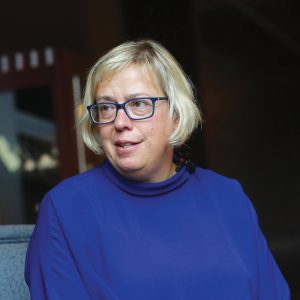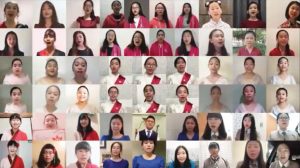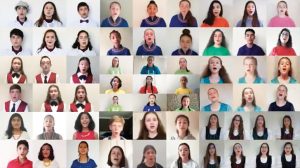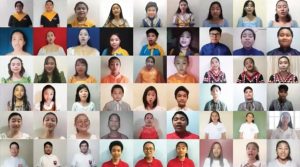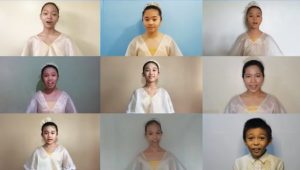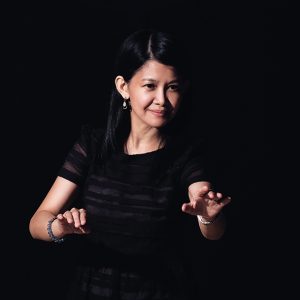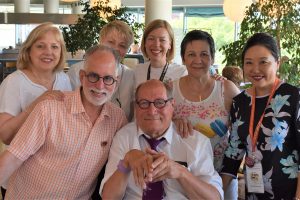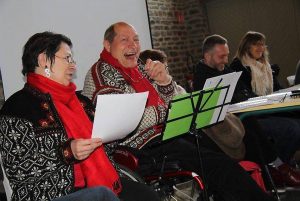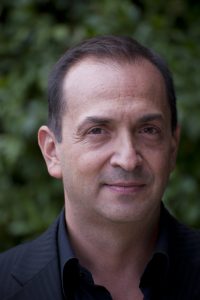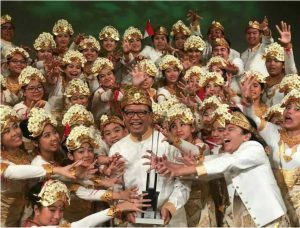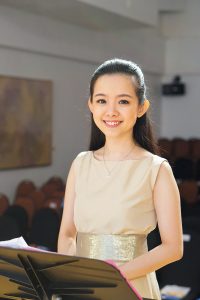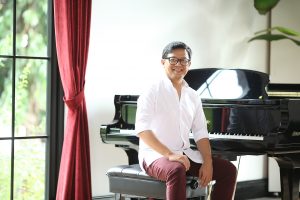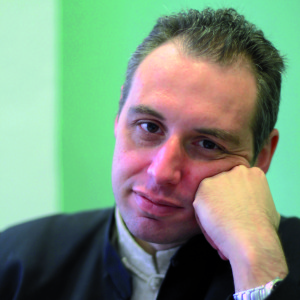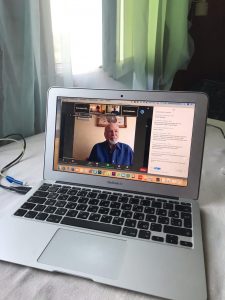Making the best of it
Interview with Tim Sharp and Gent Lazri
2020 was a very weird year for musical life. Nevertheless, events emerged, concerts took place and CD were recorded before or between the lockdowns. 2021, some completely new events are to be born, inspired or catalysed by this time of changes and challenges. We met the organizers of two of them: Pop-up Messiah Choir conductor Tim Sharp (USA) and CHORALSPACE Founder Gent Lazri (Germany) and asked them about the process of creating something new in unsure pandemic times.
Dear Mr Sharp, dear Mr Lazri, your events will start in 2021, after a very difficult year for the whole music scene. Where did you find the strength to create something like this during very silent and worrying months?
TS: The strength for this project came from working with other choral conductors that were eager to keep activity and performance alive during this devastating time. They wanted to be a part of this initiative and encouraged me to keep planning and thinking about how we could create memorable experiences with our singers.
GL: At a certain moment during the last year, we all have recognized that this crisis will not simply disappear. The way out of this pandemic is a process of change into a new choral world. There are many opportunities connected with this new start. And there are many new skills needed as well.
It is a unique chance for the choral musician to not just accept the “new normal” but to design the new choral community. This opportunity feels extremely motivating to me.
Mr Lazri, you are starting a project called CHORALSPACE in Berlin, Germany, as well as online. Mr Sharp, you will be offering a very special sing along in Georgia, Tennessee and Oklahoma, USA. Please describe your events briefly.
GL: The CHORALSPACE Academy will be an online university featuring 38 workshops with leading personalities from all over the world and 8 creative sessions with students and mentors. We will offer a 360° academic program for students of all ages. The classes are designed to focus on motivating the participants to learn and create new projects. It will be an extremely practical approach to learning.
TS: The event is a “Pop-up Messiah Choir,” where people will sing in their cars or as they stand by their car in a parking lot and listen and sing to an FM radio transmission soundtrack and rehearsal instructions for Handel’s Messiah, all centered around a 1958 restored World Traveler Airstream trailer on wheels.
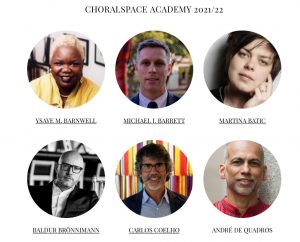
Starting an event in 2021, after a very complicated year during which the whole music world had to struggle for finances because of an obvious lack of income, how could you find the necessary financial support despite of the COVID crisis? Which organisations are behind these events?
TS: I am the originator and leader of this series of events. I will personally jumpstart the effort myself with my own financial resources, but I will draw on my institutional supporters at Trevecca University and the Center for Community Arts Innovation and the Tulsa Chorale for marketing and communication support. Further, the sponsoring choral organisations will bring “in kind” support through their marketing and communication efforts and in-kind, non-monetary support. The sponsoring organisation is the Center for Community Arts Innovation at Trevecca University in Nashville, TN (USA) and the Tulsa Chorale, Tulsa, OK. The project will always involve four collaborative choirs hosting the Pop-up Messiah Choir, will provide the parking lot for the event to take place and will assist in advertising and promotion.
GL: We do not have any financial support for the academy – so far. But we have an extremely motivated faculty that has committed to offer the classes for a very modest fee. The non-for-profit organization CHORALSPACE 2021 gGmbH will take over the organization and set-up the structure for the classes. The event is structured as a non-profit project and the costs for the online university will be shared by the participants. The crowd-funding structure and the financial commitment of the students are crucial for the success of the CHORALSPACE Academy.
In what ways is your event new?
GL: The academy sessions are spaces to learn, create and perform. The connection between these phases of the choral process will be a truly short one. In addition to the 38 workshops, there will be 8 creative sessions where students can develop and present their own projects. We will mentor this process and help the participants to realize their ideas. The CHORALSPACE performance projects are open to the participants of the academy to stage their ideas and collaborate with international ensembles. This is the innovative approach of the CHORALSPACE Academy.
TS: The “newness” of this experience is the use of older technology, short-range radio FM transmission, to teach and accompany choral music, the use of a retro application of an Airstream trailer to rally and attract a crowd of singers, and the use of a choral classic in Handel’s Messiah to use as a sing-along for a variety of trained and untrained singers.
The locations for the first events have been identified as Atlanta, GA, Nashville, TN, and Tulsa, OK, and collaborators have been contacted. The FM transmission has been tested, and the 1958 restored World Traveler Airstream is being equipped for the center of focus and branding of the event as a “Pop-up Messiah Choir”. The sheet music is being prepared for QR downloading by the singer, and singer editions are being prepared for seasoned singers as well as beginners that do not read music.
Why was it a need to create this event?
TS: The fundamental need is to focus attention on choral singing in an initiative of advocacy. This will be particularly helpful as we return to recruiting singers for our choirs following the pandemic. Handel’s Messiah was chosen because of its long history with collaborative large group sings, and because of its universal message of peace and reconciliation. Popular songs will also be used to warm up the pop-up choir, leading up to the Messiah sing-along. Any donations to the event will be distributed to support the collaborative choirs that will sponsor the pop-up community sing.
GL: The choral community is changing, and not just due to the Covid 19 pandemic. Artistic innovation, audience visibility and social inclusivity are themes that urgently need an international space for creation and realization. We need to educate and motivate choral professionals and amateurs to take the lead and broaden the focus of our choral activities.
Choral music plays a particularly important role in our communities. Many people have recognized this for the first time as choir singing was not there anymore. As we will be back, we need to rethink our position and the visibility of our role. It has never been enough to just expect to be recognized. Graduates of the CHORALSPACE Academy will play an active role in this process and our task is to give them the needed skills for their challenges.
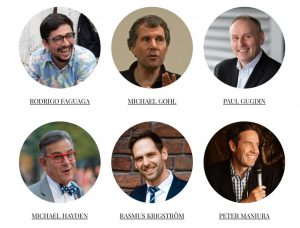
Which is/are the target group(s) of your event?
GL: We address everyone involved in choral singing. Conductors and music educators are surely the main target group, but we wish to also reach singers, composers, and choir managers. In every choir there is a small group of motivated members that invest a lot of time for the ensemble. We would love to give to these members the tools they need for creating successful projects. In addition, we will connect them to an international choral network. Age is not part of our target group consideration. Learning is a necessity at every age.
TS: The target is both an effort in collaboration for various groups that have not worked together in the past to support choral singing, as well as people who would like to sing in a new and innovative setting. The desire is to bring people into proximity with singing organizations that they could sing with in the future. It is also a chance for people who love to sing Messiah to do so in an informal and fun setting.

Did you plan it before the pandemic?
TS: I had thought about the pop-up choir idea and the need to give attention to choral singing in a new way and in a non-threatening way, but the pandemic gave me the push to do it now. I coupled all of this with the idea of using the very popular idea of focusing on a remodeled Airstream trailer and using it to draw a crowd and draw attention to an event by the media.
GL: Yes. The need of an international online university for choral music has been there for a long time. The technical solutions and ideas came up during the first lockdown in Spring 2020.
Which challenges did the pandemic bring to the event organisation?
GL: The pandemic has been a promoting catalyst for the CHORALSPACE Academy. There is now a general acceptance of the need for innovation in the choral community.
At the same time, we all are missing stages and rehearsal halls. Their function within the choral biotope is particularly important and the actual challenge is to create a learning program without the comfort zone of these halls.
TS: The pandemic did not bring challenges, but rather, brought the idea into action due to the necessity of singing in a safe environment and in an outdoor setting. After the pandemic is under control, the idea will continue as a way to advocate for choral singing and to bring new singers into existing ensembles, and a way to draw attention to the beauty of choral singing.

Why should IFCM members attend your event?
GL: IFCM members are internationally well connected and extremely interested in innovative projects around the world. The CHORALSPACE Academy will offer to them a platform to learn, create and perform the own ideas.
TS: An IFCM member will be able to participate in this event as an act of choral advocacy, as well as to enjoy the singing experience itself. We have always started our World Choral Music Symposium with a community sing, and these events are following in the same tradition as we have experienced many times as we come together to experience the joy of singing a common piece of music.
General information
- Name of the event: POP-UP MESSIAH CHOIR (with Tim Sharp)
When? Late-Spring 2021
Where? First locations are Atlanta, GA; Nashville, TN; Tulsa, OK (USA)
Website. TheTimSharp.com - Name of the event: CHORALSPACE Academy 2021/22
When? September 7, 2021 to June 28, 2022
38 weekly workshops, every Tuesday at 19:00 (CET) (3 weeks of Christmas break in December/January and 2 weeks of Easter break in April)
Where? From home or from any remote working and studying place in the world
Website: www.choralspace.org
Edited by Clayton Parr, USA


